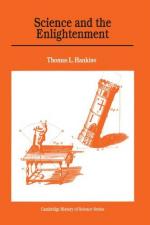
|
| Name: _________________________ | Period: ___________________ |
This test consists of 5 multiple choice questions, 5 short answer questions, and 10 short essay questions.
Multiple Choice Questions
1. ________ theory entered into law not only in the making of contracts but also in the determination of guilt and innocence.
(a) Quantum.
(b) Probability.
(c) Matrix.
(d) Chaos.
2. In his dialogue "D'Alembert's Dream," Diderot brought together the ideas of all of the following individuals except for whom?
(a) Buffon.
(b) Toland.
(c) Trembley.
(d) Maupertuis.
3. In Chapter 5, the most scandalous physiology of all was "Man the Machine" of ________.
(a) Vincennes.
(b) Boerhaave.
(c) La Mettrie.
(d) Shaftesbury.
4. The ________ class in France was composed of those who manufactured and distributed goods made from the raw materials produced by the productive class.
(a) Huygen.
(b) Quesnay.
(c) Pascal.
(d) Artisan.
5. According to the narrator at the beginning of Chapter 5, this chapter is about the world of living things and could be called ________, except as a word and as a discipline, it did not appear until the very end of the eighteenth century.
(a) Zoology.
(b) Biology.
(c) Geneology.
(d) Oceanography.
Short Answer Questions
1. In Chapter 4, what is the name of the group of financiers who obtained from the French government the right to collect taxes?
2. Who argued in Chapter 6 that although men did not enjoy equal abilities, they did have the same natural rights, and it was therefore incumbent on the government to allow individuals to pursue their own best interests to the extent that they could without infringing on the natural rights of others?
3. Harvey followed the Aristotelian notion that the embryo began as a homogeneous mass and that the organs formed one after another from this homogeneous substance in a process called ________.
4. Van Helmont had proposed an ________ in the stomach that he believed to be the innermost essence of life and that acted by fermentation.
5. Georg Stahl renamed the oily earth ________, according to the narrator in Chapter 4.
Short Essay Questions
1. What was the "Encyclopedie"?
2. What two other academic chores brought the problem of combustion to Lavoisier's attention?
3. Briefly explain John Mayow's experiment with a vacuum pump as described in chapter 4.
4. Explain the common property air and fire both shared.
5. Briefly explain Joseph Priestley and his contribution to gas chemistry.
6. Explain the importance of electricity producing muscle contractions.
7. What was Turgot's theory of expansibility?
8. Discuss Abraham Trembley's discovery of generation.
9. Explain why the Chemical Revolution was more the creation of a new science than a change in an existing one.
10. Describe the three primary kinds of governments Montesquieu distinguished between in Chapter 6.
|
This section contains 856 words (approx. 3 pages at 300 words per page) |

|




